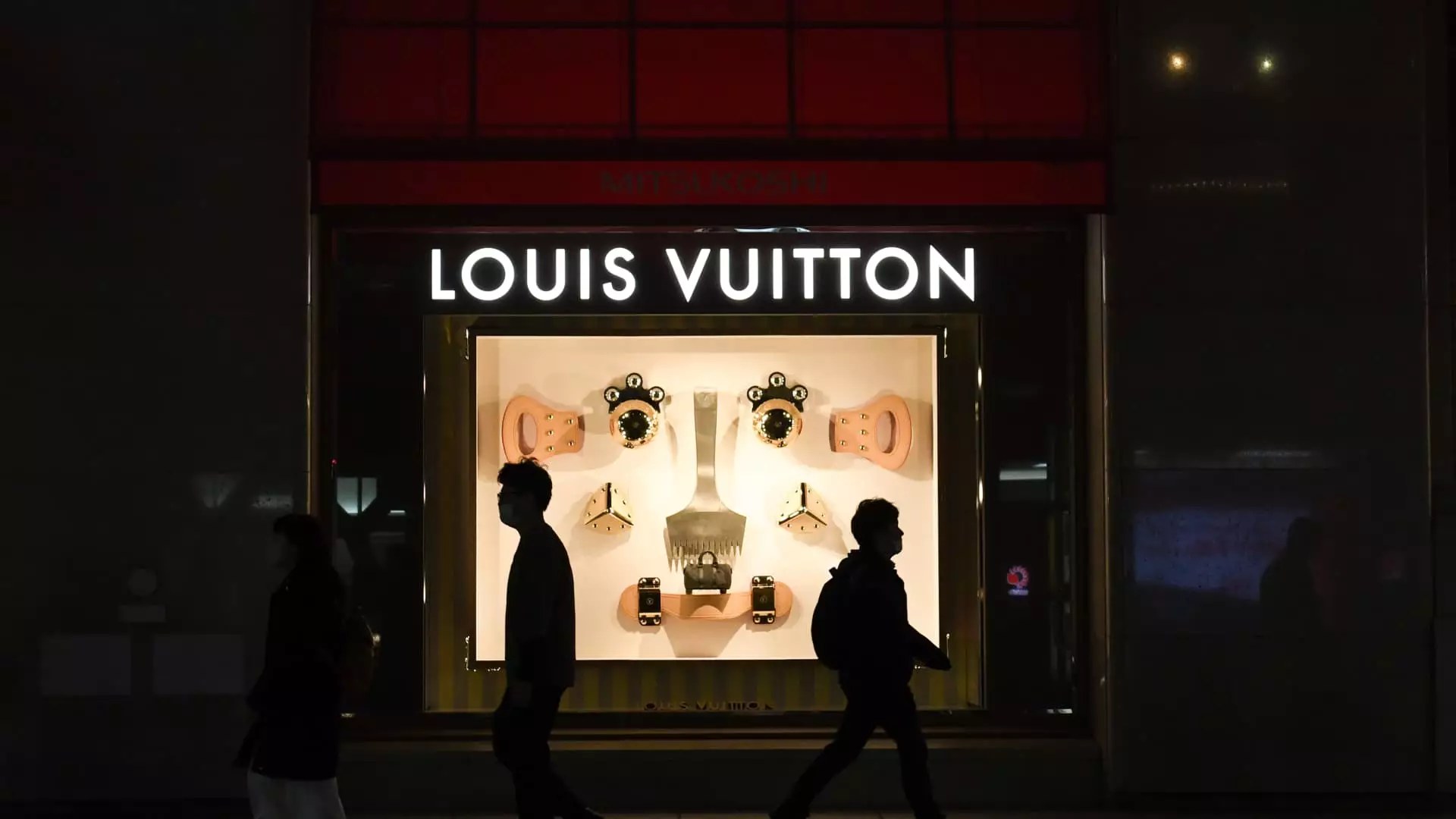It’s hard to fathom how a titan like LVMH, a name synonymous with opulence, could find itself in a tailspin. On a Tuesday morning, shares plummeted by as much as 8%, effectively ceding its title as the world’s largest luxury brand to Hermès. This humiliating drop followed a startling report revealing a 3% year-on-year decrease in first-quarter sales. The luxury giant’s unexpected slip not only disappointed investors but also sent shockwaves throughout the entire luxury goods sector. Rivals like Kering and Burberry experienced declines of 2.5% and 4.4%, respectively, highlighting a broader malaise permeating this once-buoyant market.
Revealing Market Dynamics
LVMH’s struggles are emblematic of deeper issues within the luxury sector. As consumer enthusiasm wanes, particular product categories are displaying alarming vulnerability. The company reported a staggering 9% drop in its wines and spirits division, a vital revenue stream primarily due to weakened demand for cognac in key markets like the U.S. and China. This decline isn’t merely a blip; it indicates how global geopolitical tensions are reshaping consumer behavior, particularly among affluent customers who previously might have risen above such turbulence.
Similarly, LVMH’s core fashion and leather goods segment—responsible for a stunning 78% of its profit—saw sales tumble by 5%. The once-reliable fashion division is no longer the invincible fortress it once was, as luxury consumption, often equated with status, faces scrutiny amid larger economic uncertainties.
The Regional Disparities
The geographic breakdown of the sales figures makes for grim reading. Europe was the only bright spot recorded, witnessing a 2% growth, while Asia (excluding Japan) suffered an 11% decline. U.S. sales also faltered with a 3% downturn. This divergence suggests that the luxury sector’s growth is increasingly reliant on localized economic stability—an unsettling prospect for shareholders and stakeholders alike.
The stark contrast between the robust European performance and the dismal figures from the U.S. and Asia raises questions about shifting consumer sentiments. Could luxury be losing its allure, or is it simply adapting to a new reality fraught with complexities?
Investment Sentiments and Analyst Skepticism
Analysts’ reactions have been candidly pessimistic, reflecting a profound concern over the luxury brand’s trajectory. Jefferies, for instance, slashed its target price from 670 euros to 510 euros, illustrating a stark reevaluation of LVMH’s potential amid turbulent times. The words of Citi analysts resonate like a warning bell: “not much to cheer for at the luxury bellwether.” Their assessment suggests that any hope for a quick recovery seems unfounded as U.S. and global economic uncertainties linger ominously.
These reassessments are crucial as the luxury sector, defined by its reliance on global supply chains and American consumer demand, prepares to navigate headwinds exacerbated by unpredictable trade policies. With tariffs looming, how much more can affluent shoppers endure? The anxiety in the sector is palpable, as any sign of a downturn could exacerbate an already precarious scenario.
The CEO’s Cautious Optimism
Cecile Cabanis, LVMH’s Chief Financial Officer, conveyed a blend of cautious optimism and guarded realism during a call with analysts. While she articulated that the brand had not observed a “major change in trend,” she acknowledged the vulnerabilities of aspirational consumers during less favorable economic climates. The delicate balance between maintaining high consumer expectations and responding to economic realities is now more challenging than ever.
To offset potential financial ramifications, the brand is contemplating adjustments to pricing strategies as a means to counter inflation and currency volatility. But will this strategy resonate with consumers who are increasingly scrutinizing luxury purchases? The risk is high—while luxury brands can typically absorb some tariff-induced costs, the question remains: how long can this façade of immunity hold?
Looking Ahead: A Clouded Horizon
There’s no denying that LVMH stands at a critical juncture. As uncertainties loom larger, whether rooted in trade disputes or shifting consumer sentiments, the industry’s landscape may no longer be as forgiving as it once was. The potential for a tariff-induced economic downturn casts a shadow over the luxury sector, with consumers tightening their purse strings. The expectations of a swift return to pre-pandemic purchasing patterns might need redirection—toward a more sustainable model that respects evolving economic realities rather than clinging to an ideal. LVMH and its peers must adapt or risk a more profound unraveling of their storied legacies.

